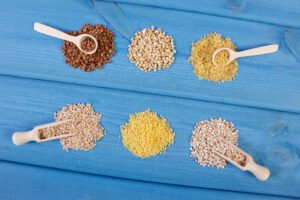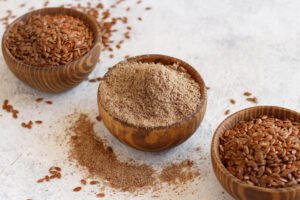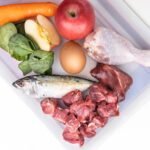Quinoa, often hailed as a superfood for humans, has also found its way into the world of canine nutrition. This ancient grain, originating from the Andean region of South America, is not only versatile and delicious but packed with nutritional benefits that can be advantageous for dogs. As pet owners increasingly seek out healthier, more nutritious options for their furry companions, quinoa is becoming a popular ingredient in homemade dog foods and even some premium dog food brands. Let’s delve into the health benefits of quinoa in dog nutrition and how it can contribute to a balanced and wholesome diet for our canine friends.
Nutritional Profile of Quinoa
Quinoa is a nutrient-dense grain that boasts an impressive nutritional profile, making it a beneficial addition to a dog’s diet:
- High-Quality Protein: Quinoa contains all nine essential amino acids, making it a complete protein source, which is vital for muscle development and repair in dogs.
- Rich in Vitamins and Minerals: It is a good source of B vitamins, magnesium, phosphorus, potassium, calcium, and iron, all of which play crucial roles in your dog’s overall health.
- Fiber Content: The high fiber content in quinoa can help in maintaining a healthy digestive system, promoting regular bowel movements and preventing constipation.
- Antioxidants: Quinoa is rich in antioxidants, which help combat free radicals, reducing inflammation and supporting overall health.
To understand more about the importance of protein in your dog’s diet and how to balance it with other nutrients, read our guide on The Balanced Bowl: Nutrition Tips for Weight Management in Dogs. This article will help you create a comprehensive diet plan that includes high-quality protein sources like quinoa.
Benefits of Quinoa in a Dog’s Diet
1. Supports Digestive Health
The fiber in quinoa can be particularly beneficial for dogs with sensitive stomachs or those prone to digestive issues. It can aid in digestion and help maintain a healthy gut flora.
For additional insights into maintaining your dog’s digestive health and the role of fiber, check out The Role of Probiotics in a Natural Dog Diet. This piece explores how alongside fiber-rich foods like quinoa, probiotics can contribute to a healthy gut flora.
2. Allergy-Friendly
For dogs with allergies to common grains like wheat, corn, or soy, quinoa provides a hypoallergenic alternative. Its gluten-free nature makes it a suitable option for dogs with gluten sensitivities.
If your dog suffers from allergies, you might be interested in Navigating Food Allergies in Dogs: Symptoms and Solutions. This article delves into identifying and managing food allergies, highlighting the benefits of hypoallergenic options like quinoa
3. Energy and Vitality
The complex carbohydrates in quinoa provide a slow-releasing source of energy, keeping your dog active and energized throughout the day without the risk of blood sugar spikes.
4. Weight Management
The high protein and fiber content in quinoa can contribute to a feeling of fullness, helping to prevent overeating and supporting weight management in dogs.
Discover more strategies for managing your dog’s weight in our detailed article, Doggy Diets: Understanding Caloric Needs for Your Furry Friend. It covers how foods that promote satiety, such as quinoa, can play a role in a healthy weight management plan.
5. Supports a Healthy Coat and Skin
The essential amino acids and antioxidants in quinoa can contribute to healthy skin and a shiny coat, promoting overall external health.
Learn about the nutrients that contribute to a healthy coat and skin in our feature on The Wonders of Sweet Potatoes for Canine Well-Being. Similar to quinoa, sweet potatoes offer nutritional benefits that can help improve your dog’s external health.
How to Include Quinoa in Your Dog’s Diet
When introducing quinoa to your dog’s diet, it’s important to do so gradually to assess tolerance and prevent digestive upset. Here’s how you can incorporate quinoa into your dog’s meals:
- Proper Preparation: Always rinse quinoa thoroughly under cold water before cooking to remove its natural coating, saponin, which can be bitter and potentially irritate your dog’s digestive system.
- Cooked Quinoa: Serve quinoa cooked rather than raw. Cook in water until it becomes translucent and the tail (the germ) spirals out.
- Mix with Regular Food: Start by adding a small amount of cooked quinoa to your dog’s regular food. Observe for any adverse reactions or changes in their stool.
Considerations and Precautions
While quinoa is generally safe and healthy for dogs, it’s essential to consider:
- Moderation: Quinoa should be a supplement to a well-balanced diet, not a primary ingredient. Dogs require a diet tailored to their specific nutritional needs, often based on animal proteins.
- Observation: As with any new food, monitor your dog for any signs of allergy or intolerance, such as itching, digestive upset, or changes in appetite.
Conclusion
Quinoa can be a nutritious, health-boosting addition to your dog’s diet when used in moderation and as part of a balanced diet. Its high protein content, rich array of vitamins and minerals, and hypoallergenic properties make it an excellent choice for dogs, especially those with grain sensitivities or dietary restrictions. As always, consult with your veterinarian before making significant changes to your dog’s diet to ensure that it aligns with their health needs and dietary requirements.
As you consider adding quinoa to your dog’s diet, it’s important to keep their overall nutrition balanced. Our guide Understanding the Basics of Canine Nutrition for a Natural Diet offers further advice on creating a diet that supports your dog’s health, including the use of superfoods and novel grains.

























